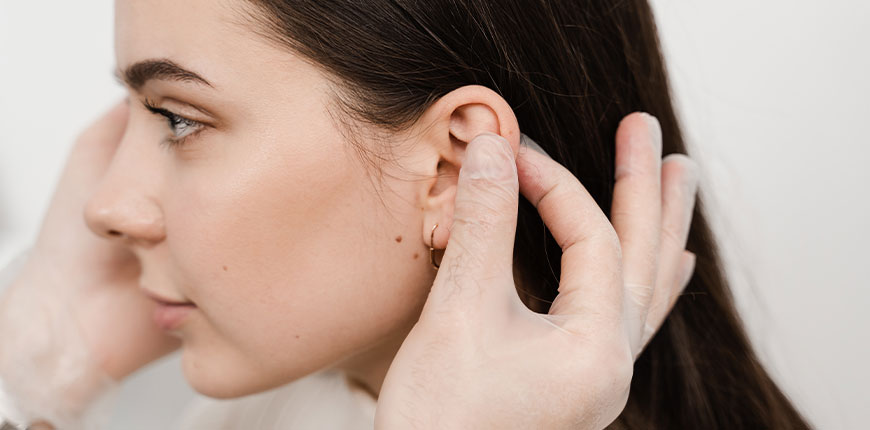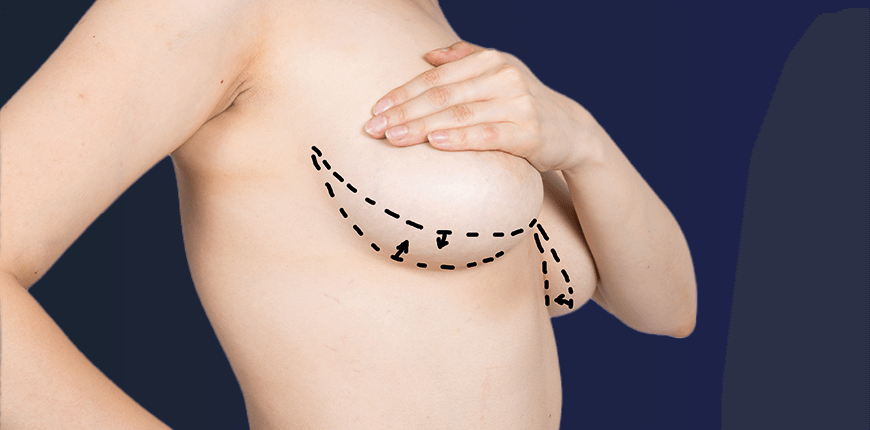
Otoplasty
Ear surgery is a cosmetic procedure to reshape or reposition the ears. This procedure is typically performed to correct protruding or oversized ears or to correct ear asymmetry. It is also preferred to improve the aesthetics of prominent ears that hang out more than normal. Prominent ear condition is mostly genetic and can affect self-confidence and self-esteem, especially in children.
What is Otoplasty Surgery?
Otoplasty surgery is a cosmetic procedure that aims to improve the appearance of the ears. It is generally performed to correct deformities or irregularities in the shape, size, or position of the ears.
Otoplasty surgery is usually preferred to correct prominent ears, which are ears that protrude from the head more than normal. This condition is often genetic and can affect self-confidence and self-esteem, especially in children.
Otoplasty surgery can also be used to correct earlobes that are too large, misshapen, or stretched due to piercing or injury. The surgery is typically performed under local anesthetic and the technique to be used is determined depending on the specific condition being treated. In most cases, the surgeon makes incisions behind the ear, removes excess cartilage or tissue, and reshapes the remaining cartilage to achieve the desired appearance. The surgeon may also use sutures to hold the ear in its new position.
After the operation, the patient needs to wear a wrap or bandage around the head for a few days to protect the ears and promote healing. Swelling and discomfort may be felt for a few weeks after the operation, but this soon subsides. Patients can return to their normal activities within one or two weeks. The results of the operation are usually permanent.
Who is the Right Candidate for Otoplasty Procedure?
Otoplasty is a cosmetic surgical procedure to improve the appearance of prominent, protruding, or misshapen ears. Ideal candidates for otoplasty must have certain characteristics.
► Complete Ear Development: It is important to wait until a child's ears have reached their full size and shape before considering otoplasty, which is usually around 5-6 years of age.
► Good General Health: As with any surgical procedure, the person must be in good general health to reduce the risk of complications.
► A Special Concern About The Ear: The most common reason for otoplasty is to reduce the prominence of the ears. However, otoplasty may also be preferred to correct asymmetry, shape, or size problems.
► A Positive Attitude And Good Psychological Health: Having a positive attitude and good psychological health are extremely important for a successful recovery after the procedure.
It is important to consult a qualified and experienced plastic surgeon to determine whether otoplasty is the right procedure and to discuss expectations regarding the surgery.
How is Otoplasty Surgery Performed?
 Otoplasty is a cosmetic procedure to improve the appearance of misshapen and disproportionate ears. It is usually performed on children between the ages of 5 and 14, but can also be performed on adults in some cases.
Otoplasty is a cosmetic procedure to improve the appearance of misshapen and disproportionate ears. It is usually performed on children between the ages of 5 and 14, but can also be performed on adults in some cases.
The procedure is usually performed on an outpatient basis under general anesthetic or local anesthetic, depending on the patient's age and preference. The surgery is typically completed in 1-2 hours and in several steps.
- Anaesthesia: The first step of the surgery is to administer anesthesia. Depending on the patient's age and preference, local or general anesthesia may be used.
- Incision: After the patient is asleep, the surgeon makes an incision behind the ear in the natural fold where the ear meets the head.
- Reshaping Of The Cartilage: The surgeon then reshapes the cartilage in the ear to achieve the desired result. This may involve removing the cartilage or adding stitches to reshape and position the cartilage.
- Closing The Incision: After the cartilage is reshaped, the surgeon closes the incision with sutures. The stitches are usually placed under the skin, so they do not need to be removed.
- Wrapping The Ear: The surgeon then applies a dressing to protect the ear and maintain its new position as it heals. This may involve wrapping the head with a bandage or using a headband.
After the operation, the patient is kept under observation for a short time. The dressing needs to be worn for a few days to a week, depending on the surgeon's instructions. Patients should avoid strenuous activities and contact sports for several weeks after surgery to allow the ear to heal properly.
How is the Otoplasty Surgery Recovery Process?
After the otoplasty, the head is wrapped with a bandage to protect the ears and keep them in the correct position. Some discomfort, swelling, and bruising in the area are normal. This will disappear after a while.
During the first week after the operation, you should rest as much as possible and avoid strenuous activities. You should also avoid lying on your side or rubbing the ears. It may be necessary to take pain medication and antibiotics to help manage any discomfort and prevent infection.
After the first week, an appointment with the surgeon is scheduled for dressing. During the recovery period, the person should continue to avoid strenuous activities and wear a headband to protect the ears while sleeping. By the third week, most swelling and bruising will have subsided. Routine activities can be resumed after this period.
In general, it can take several months for the ears to fully heal and for the final results of the surgery to become visible. It is very important to follow the surgeon's postoperative instructions carefully to ensure a smooth and successful recovery.
-
Is the cost of otoplasty surgery covered by insurance?
In general, otoplasty surgery is considered a cosmetic procedure and is not covered by insurance. However, there may be exceptions in certain cases where the surgery is deemed medically necessary, such as in cases where the ears are causing functional problems, such as hearing loss or chronic infections. In such cases, insurance coverage may be possible, but it is best to check with your insurance provider to confirm if otoplasty surgery is covered under your plan.
-
Is otoplasty surgery painful?
The surgery is performed under local anesthesia with sedation or general anesthesia, so you should not feel any pain during the procedure. After the surgery, you may experience some discomfort, swelling, and bruising, but your surgeon will provide you with pain medication to manage any discomfort.
-
What are the risks and complications associated with otoplasty surgery?
As with any surgery, there are risks and complications associated with otoplasty surgery, such as infection, bleeding, and adverse reaction to anesthesia. However, these risks are relatively low, and your surgeon will take steps to minimize them.














